Is Greenland Safe? 8 Things I Wish I Knew Before I Went
Roderick Eime shares his tips for travelers to stay safe in Greenland. From hiking and kayaking to Arctic mosquitoes, here’s what you need to know.
 Photo © Getty Images/Jordi Flores / FOAP
Photo © Getty Images/Jordi Flores / FOAP
If you travel to Greenland, you will almost certainly arrive as I did by either ship or commercial aircraft. I found that traveling in Greenland is not a particularly dangerous activity. At more than 836,300 mi² (2,000,000km²) – twice the size of Western Australia or just a bit larger than Alaska – Greenland is the world’s largest island, with 75% of its landmass above the Arctic Circle and 80% encased in ice.
With a population of barely 60,000 people – about the size of a large country town – Greenland only has a dozen population centers, most of them on the milder western coastline.
Greenland is not the sort of place where you have to keep looking over your shoulder, but rather at your feet because you’ll most likely be hiking somewhere rough and rocky. Here are my top tips to stay safe in Greenland.
- Is there any crime in Greenland?
- Visas and entry
- Food and water in Greenland
- Hiking safety in Greenland
- Go with an experienced guide and pack right
- Arctic mosquitoes
- Safety tips for kayaking in Greenland
- Enjoy the wildlife from a safe distance
- Listen to The World Nomads Podcast: Greenland
1. Is there any crime in Greenland?
Greenland is not a place you have to worry about crime. According to the statistical website, Numbeo, Greenland rates as low for crime and high for safety. The capital Nuuk's low Crime Index of 21 compares favorably with other large Australian cities like Melbourne (44) or US cities like Los Angeles (43), although the number of reported rapes among younger residents is alarming especially in the remote villages. But for regular travelers, crime is all but non-existent.
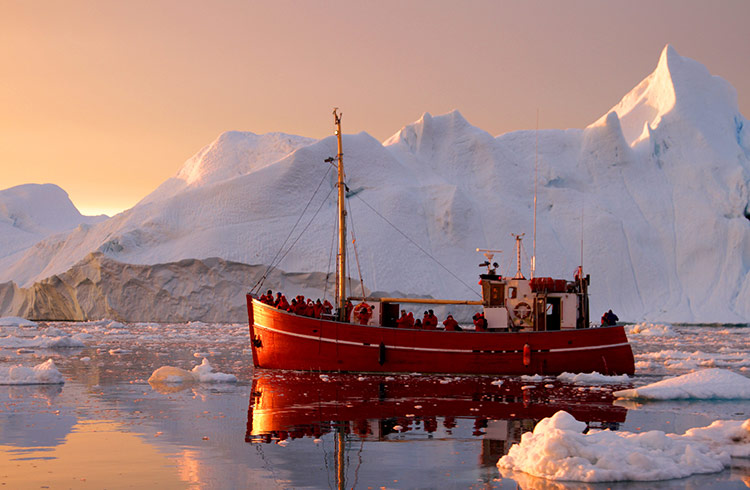
2. Visas and entry
Greenland is a country administered as part of the so-called ‘Danish Realm’ and is easy to visit for most travelers and visitors from the USA, UK, Australia and Canada who do not require visas.
Residents of countries, like South Africa and Russia, will require visas, so if in doubt, click here to read the list of nationalities that will require a visa for Greenland.
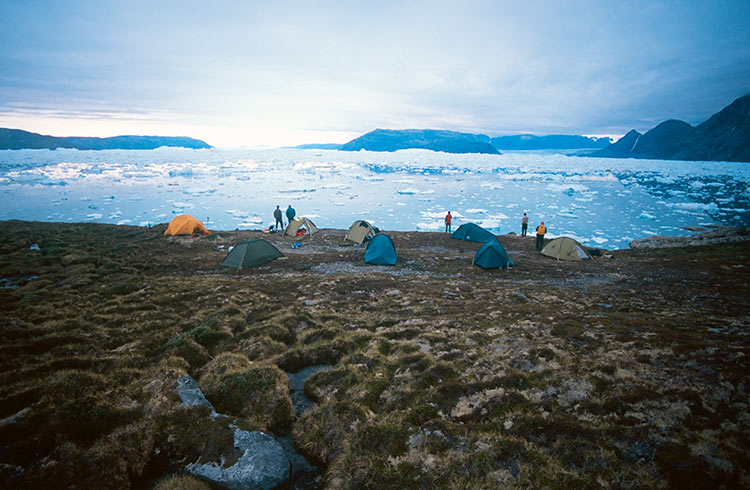
3. Food and water in Greenland
Be careful by all means, but Greenland has clean, safe drinking water everywhere. Otherwise, just take normal hygiene precautions as you would anywhere.
The indigenous Inuit Greenlanders' diet, as I found out, is naturally restricted to what they can harvest from the sea. As such, there is little in the way of vegetables apart from the few berries, tubers and grasses that grow on the uncovered land.
Of course, it is polite to accept food offered to you by your hosts, but some dishes might challenge your palate. One item I have tried on more than one occasion is Muktuk, a frozen and cured form of whale or seal skin and blubber. It's one of the few native foods I cannot tolerate.
The type of whaling conducted in Greenland is classified as ‘Aboriginal Subsistence Whaling’, which means small-scale, not-for-profit and in order to meet the nutritional and cultural requirements of Indigenous people. Travelers should reach their own conclusions on whether or not to eat it.
4. Hiking safety in Greenland
Most travelers visit Greenland for its scenic beauty and adventure activities like hiking and kayaking.
- If hiking, wear sturdy, well-worn in, grippy, closed footwear as trails can be uneven and rocky or even icy in patches
- The cool Arctic climate can be very pleasant in summer with averages of around 50ºF (10ºC) (although these averages are rising). My advice is to pack clothing you can layer, which is particularly applicable to outdoor activities in Greenland
- Make sure your outermost layer is water/spray proof, and your innermost layer is warm. Merino undergarments are excellent. A beanie and gloves are useful too.
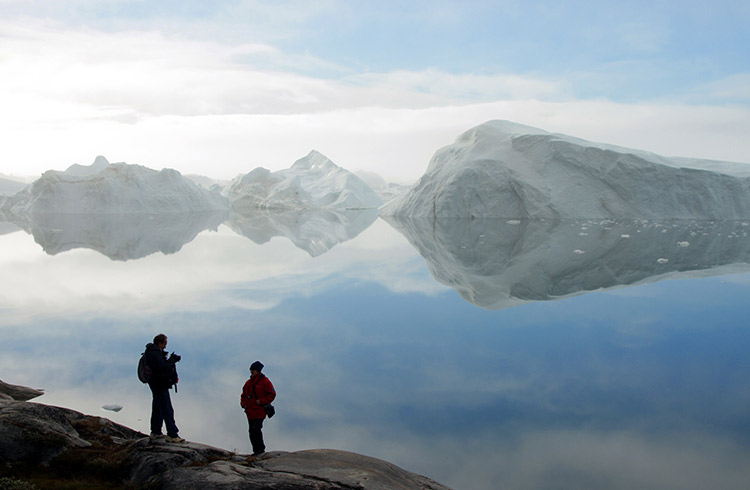
5. Go with an experienced guide and pack right
If you’re traveling in unfamiliar territory, it’s wise to go with a guide, and, just like hiking anywhere, carry sufficient water, a sun hat, sunglasses, trail snacks and insect repellent.
Greenland is a great destination to see and walk on glaciers, but the latter is a precarious activity and should be avoided unless you are with an experienced guide on a marked path. Don't wander off, as glaciers can shift and crumble without warning.
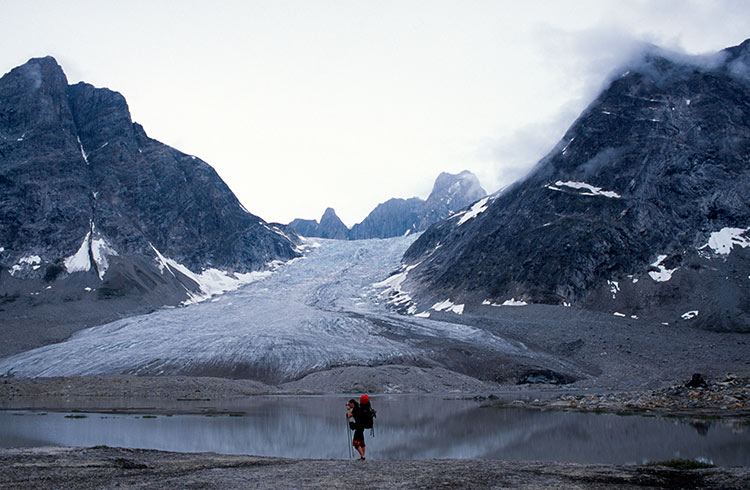
6. Arctic mosquitoes
Arctic mosquitoes are legendary and ferocious, but you can avoid these pests by wearing a net around your hat, staying close to the sea (for the breeze) or using a repellent. Light colored clothes are less attractive to mosquitoes.
I discovered the local solution to this problem is to take the leaves from the Labrador tea (qajaasat) plant, squash them in your hand and rub the juice on any exposed areas.
If you must use commercial repellents, use a liquid or cream, as sprays are not eco-friendly.
7. Safety tips for kayaking in Greenland
If you’re kayaking, wear a dry suit to insulate yourself against the freezing water in case a capsize occurs. Kayak tour operators in Greenland will supply these along with instructions and tips.
One of the most important safety tips when kayaking in any Arctic location is to keep well clear of icebergs. It’s tempting to get up close to see these big blue beauties, but icebergs can roll without warning and, take it from me, you don’t want to be anywhere near an iceberg the size of a five-story building when it decides to invert itself.
The same goes for glaciers; never kayak within 650ft (200m) of a glacier face because when they calve, as they frequently do, they will throw a wave big enough to surf on. If a big wave is heading toward you, quickly point the bow (front) of your kayak into the wave and meet it head-on.
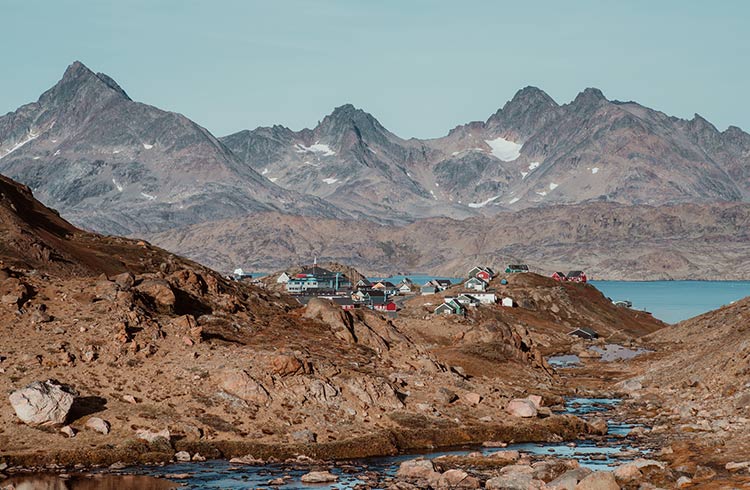
8. Enjoy wildlife, but keep your distance
The most dangerous animal in the Arctic is the polar bear but as a summer visitor to Greenland, you are unlikely to ever see one, much less find yourself in a life-threatening encounter.
Sled dogs might look cute, but never approach one. They are often chained near houses and look lonely, but do not be tempted to go and pat one as they can be unpredictable and defensive, and may lash out at a stranger. If the owner is nearby, ask by all means, but the most likely answer will be 'no' - for your own safety.
One animal that you might enjoy seeing is the big woolly Musk Ox, but you should keep a safe distance and be cautious.
Experienced polar expedition leader, Susan Adie of G Adventures, had one encounter with these beasts which she’ll never forget.
“I was guiding a group of guests when we came upon a small herd of beautiful musk ox including calves,” Susan told me, “we stood a safe distance, perhaps 100 yards (91m/300ft), and noted that the herd had taken up their typical defense ring, with the young in the center. What we didn’t see was a big lone shaggy bull who’d been obscured by a large rock. When he wandered into view he was just 40 yards (35m/120ft) or so away and I think we scared each other, because as we slowly backed away, our hearts beating in our throats, the bull stomped loudly, snorted and charged. I was standing between the animal and my retreating guests when he came to a sudden halt just maybe 10 yards (9m/30ft) away, still snorting louder than ever. I think I was about to faint at this point, but the bull decided to run quickly back to his herd while I sat on a rock for a few minutes catching my breath.”
Listen to The World Nomads Podcast: Greenland
Related articles
Simple and flexible travel insurance
You can buy at home or while traveling, and claim online from anywhere in the world. With 150+ adventure activities covered and 24/7 emergency assistance.
Get a quote
22 Comments
kraken сайт
<a href=https://xn--krakn37-rt4c.com>kraken</a>
Let me share the ugly truth: nearly all septic companies just maintain tanks. They are like quick-fix salesmen at a chainsaw convention. But Septic Solutions? They are special. It all originated back in the beginning of the 2000s when Art and his brothers—just kids hardly tall enough to carry a shovel—helped install their family's septic system alongside a grizzled pro. Imagine this: three youngsters knee-deep in Pennsylvania clay, learning how soil porosity affects drainage while their friends played Xbox. "We did not just dig trenches," Art told me last winter, steaming coffee cup in hand. "We learned how soil whispers truths. A patch of cattails here? That's Mother Nature shouting 'high water table.'"
https://www.behance.net/septicsolutio
Let me share the dirty truth: most septic companies just pump tanks. They're like temporary salesmen at a chainsaw convention. But Septic Solutions? They're unique. It all began back in the beginning of the 2000s when Art and his siblings—just kids barely tall enough to shoulder a shovel—assisted install their family's septic system alongside a grizzled pro. Picture this: three kids waist-deep in Pennsylvania clay, understanding how soil porosity affects drainage while their buddies played Xbox. "We did not just dig ditches," Art explained to me last winter, hot coffee cup in hand. "We discovered how ground whispers secrets. A patch of wetland vegetation here? That's Mother Nature shouting 'high water table.'"
https://littlelioness.net/2023/07/11/breathe-easy-the-importance-of-furnace-air-filter-maintenance/
This is the ugly truth: nearly all septic companies just maintain tanks. They act like temporary salesmen at a chainsaw convention. But Septic Solutions? They're special. It all started back in the early 2000s when Art and his brothers—just kids barely tall enough to carry a shovel—assisted install their family's septic system alongside a weathered pro. Visualize this: three youngsters waist-deep in Pennsylvania clay, understanding how soil porosity affects drainage while their buddies played Xbox. "We never just dig holes," Art told me last winter, steaming coffee cup in hand. "We discovered how ground whispers secrets. A patch of cattails here? That's Mother Nature shouting 'high water table.'"
https://rentry.co/t7ma5oc6
This is the ugly truth: most septic companies just service tanks. They act like temporary salesmen at a demolition convention. But Septic Solutions? They are special. It all began back in the beginning of the 2000s when Art and his family—just kids barely tall enough to carry a shovel—helped install their family's septic system alongside a weathered pro. Picture this: three youngsters waist-deep in Pennsylvania clay, discovering how soil absorption affects drainage while their friends played Xbox. "We did not just dig trenches," Art told me last winter, steaming coffee cup in hand. "We discovered how soil whispers mysteries. A patch of cattails here? That's Mother Nature screaming 'high water table.'"
https://pin.it/XfxXjjbXa
This is the ugly truth: most septic companies just maintain tanks. They're like band-aid salesmen at a chainsaw convention. But Septic Solutions? They are special. It all originated back in the early 2000s when Art and his brothers—just kids hardly tall enough to carry a shovel—aided install their family's septic system alongside a weathered pro. Visualize this: three pre-teens knee-deep in Pennsylvania clay, discovering how soil permeability affects drainage while their friends played Xbox. "We didn't just dig trenches," Art explained to me last winter, steaming coffee cup in hand. "We learned how soil whispers secrets. A patch of marsh plants here? That's Mother Nature shouting 'high water table.'"
https://blogfreely.net/ygerussnim/why-long-term-planning-matters-for-hvac-in-marysville-wa
This is the ugly truth: the majority of septic companies just pump tanks. They're like temporary salesmen at a disaster convention. But Septic Solutions? They're special. It all began back in the beginning of the 2000s when Art and his family—just kids scarcely tall enough to carry a shovel—assisted install their family's septic system alongside a grizzled pro. Picture this: three kids knee-deep in Pennsylvania clay, understanding how soil porosity affects drainage while their friends played Xbox. "We didn't just dig ditches," Art told me last winter, hot coffee cup in hand. "We understood how ground whispers mysteries. A patch of wetland vegetation here? That's Mother Nature screaming 'high water table.'"
https://atavi.com/share/xlku2ozbydth
Here's the harsh truth: nearly all septic companies just service tanks. They're like temporary salesmen at a disaster convention. But Septic Solutions? These guys are unique. It all originated back in the beginning of the 2000s when Art and his brothers—just kids hardly tall enough to carry a shovel—helped install their family's septic system alongside a grizzled pro. Picture this: three pre-teens knee-deep in Pennsylvania clay, understanding how soil porosity affects drainage while their peers played Xbox. "We never just dig ditches," Art explained to me last winter, steaming coffee cup in hand. "We discovered how earth whispers secrets. A patch of cattails here? That's Mother Nature shouting 'high water table.'"
https://www.cheaperseeker.com/u/jakleylihb
Let me share the harsh truth: the majority of septic companies just maintain tanks. They act like quick-fix salesmen at a disaster convention. But Septic Solutions? These guys are unique. It all originated back in the beginning of the 2000s when Art and his brothers—just kids hardly tall enough to lift a shovel—aided install their family's septic system alongside a experienced pro. Picture this: three youngsters buried in Pennsylvania clay, discovering how soil permeability affects drainage while their buddies played Xbox. "We never just dig holes," Art told me last winter, hot coffee cup in hand. "We discovered how ground whispers mysteries. A patch of cattails here? That's Mother Nature shouting 'high water table.'"
https://www.4shared.com/s/f2fa5iIR6ku
Let me share the dirty truth: the majority of septic companies just maintain tanks. They're like temporary salesmen at a demolition convention. But Septic Solutions? They're unique. It all started back in the beginning of the 2000s when Art and his brothers—just kids hardly tall enough to shoulder a shovel—helped install their family's septic system alongside a weathered pro. Visualize this: three pre-teens waist-deep in Pennsylvania clay, discovering how soil absorption affects drainage while their peers played Xbox. "We never just dig holes," Art explained to me last winter, hot coffee cup in hand. "We discovered how earth whispers mysteries. A patch of cattails here? That's Mother Nature yelling 'high water table.'"
https://www.gamespot.com/profile/audianridj/
Here's the harsh truth: the majority of septic companies just pump tanks. They are like temporary salesmen at a chainsaw convention. But Septic Solutions? These guys are unique. It all started back in the early 2000s when Art and his brothers—just kids scarcely tall enough to lift a shovel—helped install their family's septic system alongside a experienced pro. Picture this: three pre-teens waist-deep in Pennsylvania clay, understanding how soil absorption affects drainage while their friends played Xbox. "We never just dig ditches," Art explained to me last winter, warm coffee cup in hand. "We learned how ground whispers truths. A patch of wetland vegetation here? That's Mother Nature yelling 'high water table.'"
https://giphy.com/channel/samiriqxcv
I need to share with you something most septic companies won't: there are two kinds of people in this life. Those who think septic systems are simply "subterranean tanks for waste," and those who've had raw sewage gurgling into their property at the dead of night. I discovered this distinction the hard way in 2005—standing in sludge, trembling in a Washington rainstorm, as my siblings and I assisted a grizzled installer fix our family's broken system. I was 14. My hands were raw. My pants were ruined. But that night, something changed: This is not just dirt work. It's folks' lives we're protecting.
This is the dirty truth: most septic companies just maintain tanks. They act like temporary salesmen at a disaster convention. But Septic Solutions? They are different. It all began back in the early 2000s when Art and his family—just kids scarcely tall enough to shoulder a shovel—aided install their family's septic system alongside a experienced pro. Visualize this: three youngsters waist-deep in Pennsylvania clay, understanding how soil porosity affects drainage while their friends played Xbox. "We didn't just dig ditches," Art shared with me last winter, warm coffee cup in hand. "We understood how ground whispers secrets. A patch of cattails here? That's Mother Nature yelling 'high water table.'"
https://www.awwwards.com/septicsolutionsllc/
Allow me to explain something most septic companies refuse to: there are two types of people in this reality. Those who believe septic systems are just "buried containers for waste," and those who have had raw sewage gurgling into their yard at midnight. I learned this reality the difficult way in 2005—standing in muck, freezing in a Washington rainstorm, as my siblings and I assisted a veteran installer restore our family's broken system. I was 14. My hands blistered. My jeans were destroyed. But that moment, something crystallized: This ain't just manual labor. It's families' lives we're safeguarding.
This is the ugly truth: nearly all septic companies just pump tanks. They're like band-aid salesmen at a disaster convention. But Septic Solutions? They're special. It all started back in the early 2000s when Art and his siblings—just kids barely tall enough to lift a shovel—helped install their family's septic system alongside a experienced pro. Imagine this: three pre-teens waist-deep in Pennsylvania clay, learning how soil porosity affects drainage while their peers played Xbox. "We never just dig trenches," Art explained to me last winter, warm coffee cup in hand. "We understood how soil whispers mysteries. A patch of marsh plants here? That's Mother Nature shouting 'high water table.'"
https://www.pinterest.com/pin/624241198844572503/
Allow me to tell you something most septic companies refuse to: there are two kinds of people in this world. Those who believe septic systems are just "subterranean tanks for waste," and those who've had raw sewage bubbling into their property at 2 AM. I understood this distinction the hard way in 2005—waist-deep in sludge, freezing in a Washington downpour, as my siblings and I assisted a veteran installer repair our family's collapsed system. I was a teenager. My hands blistered. My pants were destroyed. But that evening, something changed: This ain't just dirt work. It's people's lives we're safeguarding.
Here's the harsh truth: most septic companies just service tanks. They act like temporary salesmen at a disaster convention. But Septic Solutions? They're different. It all began back in the early 2000s when Art and his siblings—just kids barely tall enough to carry a shovel—aided install their family's septic system alongside a experienced pro. Imagine this: three kids waist-deep in Pennsylvania clay, discovering how soil absorption affects drainage while their friends played Xbox. "We never just dig trenches," Art explained to me last winter, hot coffee cup in hand. "We learned how ground whispers truths. A patch of cattails here? That's Mother Nature yelling 'high water table.'"
https://sethbjbc662.theglensecret.com/the-impact-of-septic-failures-on-marine-life-and-coastal-economies
I need to tell you something the majority of septic companies won't: there are two categories of people in this world. Those who think septic systems are simply "buried containers for waste," and those that have had raw sewage erupting into their yard at 2 AM. I understood this reality the tough way in 2005—waist-deep in sludge, freezing in a Washington rainstorm, as my brothers and I assisted a veteran installer repair our family's collapsed system. I was a teenager. My hands ached. My jeans were wrecked. But that evening, something changed: This is not just manual labor. It's people's lives we're safeguarding.
This is the dirty truth: the majority of septic companies just pump tanks. They're like temporary salesmen at a chainsaw convention. But Septic Solutions? They're special. It all began back in the beginning of the 2000s when Art and his family—just kids hardly tall enough to shoulder a shovel—helped install their family's septic system alongside a experienced pro. Imagine this: three kids waist-deep in Pennsylvania clay, learning how soil permeability affects drainage while their peers played Xbox. "We never just dig holes," Art shared with me last winter, warm coffee cup in hand. "We understood how earth whispers mysteries. A patch of marsh plants here? That's Mother Nature screaming 'high water table.'"
https://hashnode.com/@septicsolutionsllc
Let me share with you something the majority of septic companies won't: there are two types of people in this reality. Those who assume septic systems are just "underground boxes for waste," and those that have had raw sewage bubbling into their yard at 2 AM. I understood this difference the tough way in 2005—waist-deep in sludge, shivering in a Washington rainstorm, as my siblings and I assisted a grizzled installer repair our family's collapsed system. I was a teenager. My hands ached. My jeans were destroyed. But that night, something crystallized: This is not just manual labor. It's families' lives that we're safeguarding.
This is the ugly truth: most septic companies just pump tanks. They are like temporary salesmen at a chainsaw convention. But Septic Solutions? They're different. It all started back in the early 2000s when Art and his brothers—just kids hardly tall enough to carry a shovel—helped install their family's septic system alongside a experienced pro. Imagine this: three youngsters waist-deep in Pennsylvania clay, understanding how soil permeability affects drainage while their peers played Xbox. "We didn't just dig ditches," Art explained to me last winter, hot coffee cup in hand. "We understood how soil whispers secrets. A patch of marsh plants here? That's Mother Nature yelling 'high water table.'"
https://felixsznw221.cavandoragh.org/what-homeowners-dont-know-about-septic-system-failuresand-why-training-makes-the-difference
Allow me to explain something most septic companies refuse to: there are two kinds of people in this world. Those who assume septic systems are simply "underground boxes for waste," and those who have had raw sewage gurgling into their yard at 2 AM. I understood this distinction the hard way in 2005—waist-deep in mud, shivering in a Washington deluge, as my brothers and I helped a weathered installer fix our family's failed system. I was a teenager. My hands were raw. My clothes were destroyed. But that night, something crystallized: This ain't just digging. It's families' lives we are safeguarding.
Let me share the harsh truth: nearly all septic companies just pump tanks. They're like temporary salesmen at a disaster convention. But Septic Solutions? They are different. It all originated back in the early 2000s when Art and his siblings—just kids scarcely tall enough to carry a shovel—assisted install their family's septic system alongside a weathered pro. Picture this: three pre-teens buried in Pennsylvania clay, learning how soil permeability affects drainage while their buddies played Xbox. "We never just dig trenches," Art explained to me last winter, warm coffee cup in hand. "We learned how soil whispers truths. A patch of wetland vegetation here? That's Mother Nature yelling 'high water table.'"
https://atavi.com/share/xmfw1ezwj7nx
I need to share with you something nearly all septic companies will not: there are two categories of people in this reality. Those who assume septic systems are just "buried containers for waste," and those who have had raw sewage bubbling into their property at the dead of night. I discovered this distinction the tough way in 2005—standing in mud, trembling in a Washington rainstorm, as my family and I assisted a weathered installer repair our family's failed system. I was fourteen. My hands were raw. My pants were ruined. But that moment, something changed: This isn't just digging. It's folks' lives we're preserving.
This is the harsh truth: most septic companies just pump tanks. They're like quick-fix salesmen at a demolition convention. But Septic Solutions? These guys are special. It all began back in the early 2000s when Art and his siblings—just kids hardly tall enough to shoulder a shovel—aided install their family's septic system alongside a weathered pro. Visualize this: three youngsters knee-deep in Pennsylvania clay, learning how soil porosity affects drainage while their buddies played Xbox. "We did not just dig trenches," Art explained to me last winter, hot coffee cup in hand. "We learned how ground whispers secrets. A patch of cattails here? That's Mother Nature screaming 'high water table.'"
https://dallasscvk026.image-perth.org/from-inspection-to-installation-why-full-system-expertise-is-critical-in-septic-work
Allow me to share with you something the majority of septic companies will not: there are two kinds of people in this world. Those who assume septic systems are just "buried containers for waste," and those who've had raw sewage bubbling into their backyard at the dead of night. I discovered this distinction the tough way in 2005—standing in mud, freezing in a Washington rainstorm, as my brothers and I helped a veteran installer restore our family's collapsed system. I was fourteen. My hands were raw. My clothes were wrecked. But that evening, something changed: This ain't just manual labor. It's families' lives that we're safeguarding.
Here's the ugly truth: the majority of septic companies just maintain tanks. They're like band-aid salesmen at a chainsaw convention. But Septic Solutions? They're unique. It all began back in the early 2000s when Art and his brothers—just kids hardly tall enough to carry a shovel—assisted install their family's septic system alongside a grizzled pro. Imagine this: three pre-teens knee-deep in Pennsylvania clay, understanding how soil permeability affects drainage while their buddies played Xbox. "We did not just dig trenches," Art told me last winter, steaming coffee cup in hand. "We learned how earth whispers secrets. A patch of cattails here? That's Mother Nature screaming 'high water table.'"
https://kameronvaea972.lucialpiazzale.com/why-septic-work-requires-a-whole-system-approach-not-isolated-fixes
Let me explain something nearly all septic companies will not: there are two types of people in this life. Those who think septic systems are merely "underground boxes for waste," and those who have had raw sewage bubbling into their property at the dead of night. I understood this distinction the difficult way in 2005—standing in muck, freezing in a Washington rainstorm, as my brothers and I helped a grizzled installer fix our family's collapsed system. I was a teenager. My hands were raw. My clothes were ruined. But that night, something clicked: This ain't just digging. It's folks' lives we are preserving.
Let me share the harsh truth: the majority of septic companies just pump tanks. They're like temporary salesmen at a disaster convention. But Septic Solutions? These guys are special. It all began back in the early 2000s when Art and his siblings—just kids scarcely tall enough to shoulder a shovel—assisted install their family's septic system alongside a weathered pro. Visualize this: three youngsters buried in Pennsylvania clay, learning how soil absorption affects drainage while their friends played Xbox. "We did not just dig ditches," Art told me last winter, hot coffee cup in hand. "We understood how ground whispers secrets. A patch of marsh plants here? That's Mother Nature shouting 'high water table.'"
https://pixabay.com/users/53935182/
This is the harsh truth: nearly all HVAC failures happen because someone ignored a step. Did not calculate the load accurately. Used cheap equipment. Misjudged the insulation needs. We've personally fixed countless of these disasters. And each time, we record another lesson. Like in 2017, when we began adding smart thermostats to all installation. Why? Because Sarah, our master tech, got tired of watching homeowners burn money on bad temperature control. Now clients save 20-30% yearly.
https://www.pinterest.com/productairheating/_profile/
Here's the ugly truth: the majority of HVAC failures happen because someone missed a step. Failed to calculate the load accurately. Used cheap equipment. Misjudged the insulation needs. We have fixed countless of these failures. And each and every time, we record another lesson. Like in 2017, when we decided on adding smart thermostats to every install. Why? Because Sarah, our senior tech, got sick of watching homeowners lose money on inefficient temperature control. Now clients save 20-30% yearly.
https://product-air-heating-cooling-and-electric.hub.biz/